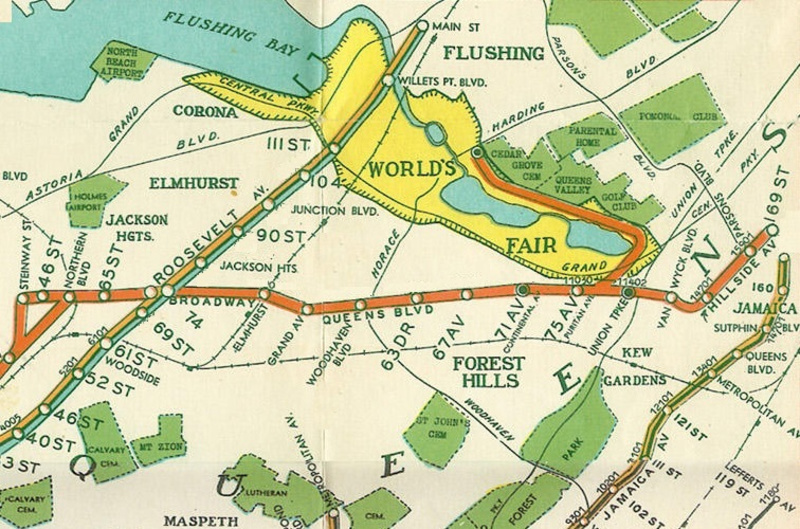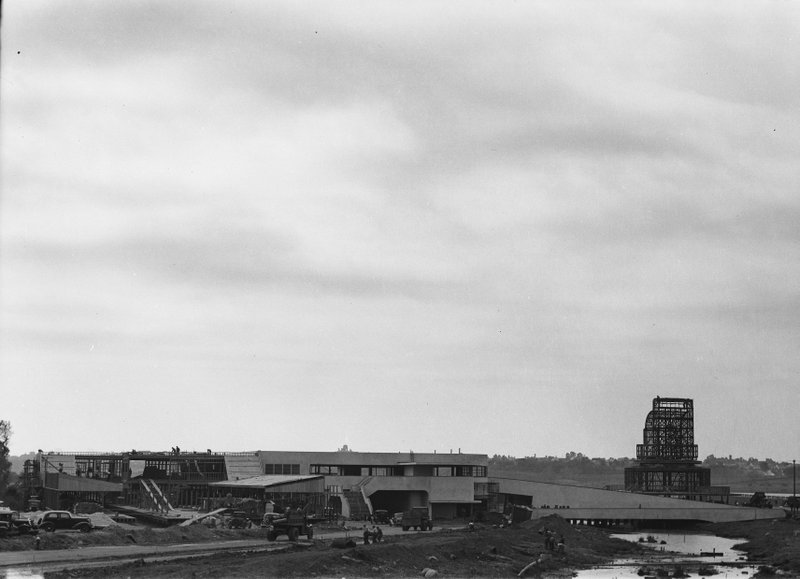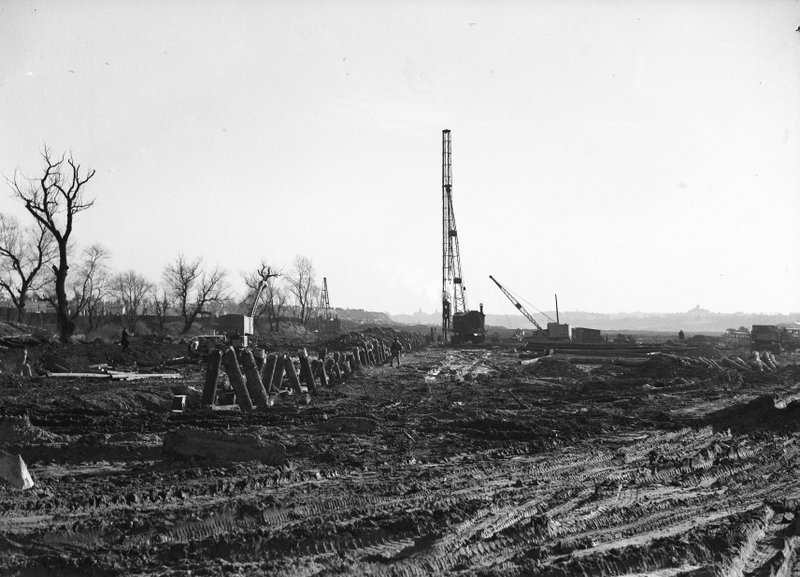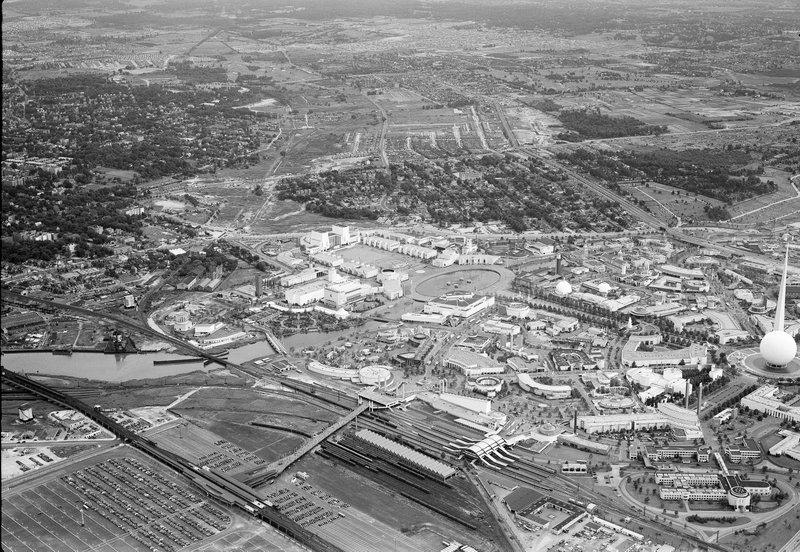 Image via Wikimedia Commons, nycsubway.org
Image via Wikimedia Commons, nycsubway.org
There is a line of the IND (Independent) subway that no longer exists, created specifically for the 1939 World’s Fair in Flushing Meadows-Corona Park. Near the Forest Hills-71st Street stop (along today’s M/R lines), the World’s Fair Line began at a flying junction (a rail crossing where tracks cross over ground level trucks via a bridge) and ran through Jamaica Yard. Two tracks that formerly went up to or through the yard storage area were extended, turning north along the east side of Flushing Meadows-Corona Park atop a pine wooden trestle built atop marshland (made famous as the Great Gatsby’s Valley of Ashes), and ending at a new station, the World’s Fair Terminal Station. The spur was a total of 2 miles, built at cost of $1.7 million.
The IRT and BMT lines also ran World’s Fair trains, but the special trains ran along existing routes. As the IND was the only line “the city then owned directly,” reported the New York Times, it seemed necessary at the time to build this extension and terminal. Here we have photos shared with us from the NYC Parks Photo Archive of the construction of the subway line and depots.
 Construction of the IND Substation Depot in 1938, viewed from Horace Harding Boulevard. Photo from NYC Parks Photo Archive.
Construction of the IND Substation Depot in 1938, viewed from Horace Harding Boulevard. Photo from NYC Parks Photo Archive.
Riders could take the take the E train express from Hudson Terminal (today’s World Trade Center stop) to the World’s Fair, or the double-lettered GG train from Smith-9th Street (going north to Queens Plaza, and extending to Forest Hills-71st Street). It cost an extra 5 cents to ride the World’s Fair Train (on top of the fare then, which was 5 cents as well), collected when entering or leaving the World’s Fair Terminal Station, which had two tracks and three platforms.
 Construction of the IND World’s Fair Subway line in 1938. Photo from NYC Parks Photo Archive.
Construction of the IND World’s Fair Subway line in 1938. Photo from NYC Parks Photo Archive.
 Aerial view showing the Flushing Line’s IRT/BMT station on the northern side of the fair grounds. Photo from NYC Parks Photo Archive.
Aerial view showing the Flushing Line’s IRT/BMT station on the northern side of the fair grounds. Photo from NYC Parks Photo Archive.
In its first year of operation in 1939, the IND Line carried a little over close to 7.1 million passengers, only 54% of the projected ridership. It was closed up for the winter, and reopened for the 1940 season of the World’s Fair at which point the New York City subway system had unified.
Though there were some plans to make the line permanent following the closure of the fair, the idea was dropped due to a combination of expense, political pressure and other factors. Though the Queens Borough President favored its retention to support the development of Flushing, there were no major permanent attraction in the park yet, with the 1939 World’s Fair predating Citi Field and the United States Tennis Association complex. The always ready car proponent Robert Moses wanted the right of way to extend the Van Wyck Expressway and a street. In addition, the IND World’s Fair Line did not meet construction standards for permanent lines at the time, which were required to be underground.
As such, demolition began on January 15th, 1941. Jamaica Yard returned to its original state, but the signals added for the World’s Fair Line still remain in use.
Next, check out a fun map of NYC’s abandoned stations and lost subway lines and the secrets of the NYC subway.





